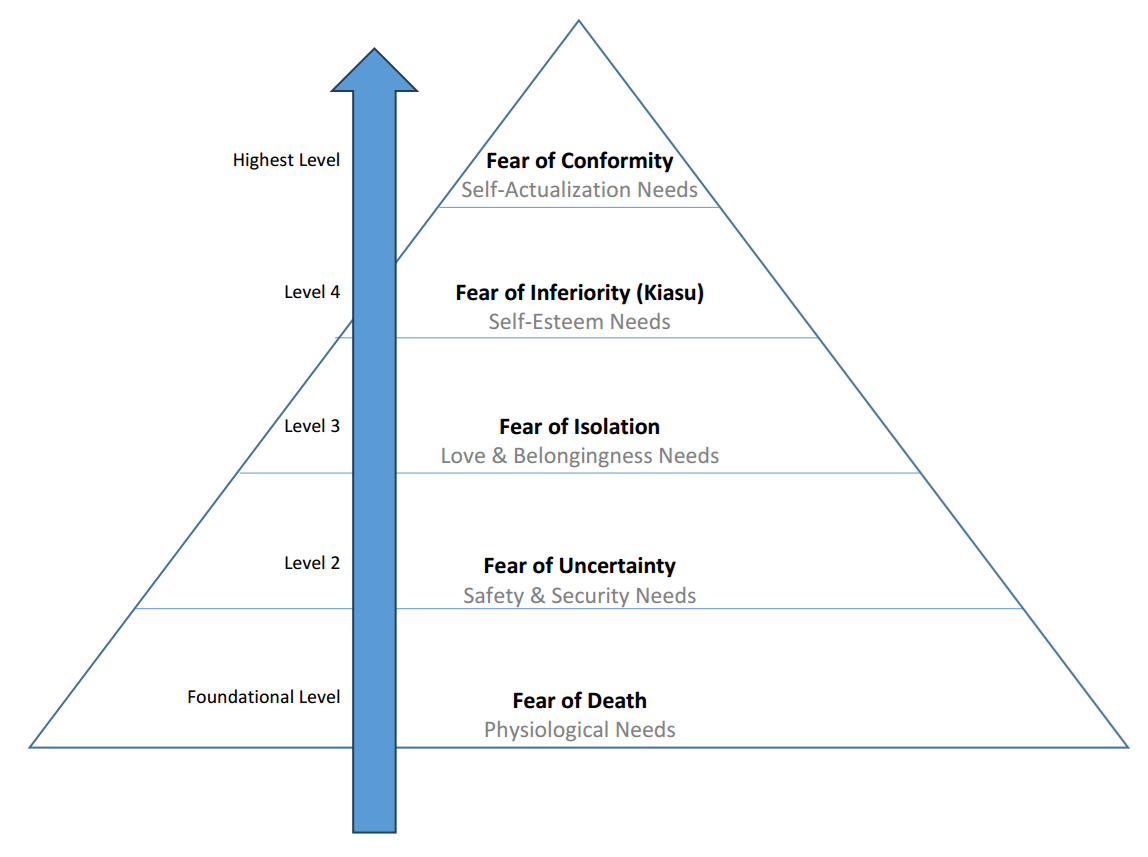Content provided by Ts. Dr. Leong Yee Rock, AI Adoption Specialist at VYROX AI R&D and University of Malaya.
Introduction
Humanity’s earliest instincts were driven by survival. Early humans faced predators, harsh environments, and starvation, relying on fear as a primal tool to avoid harm and stay alive. Motivation emerged later, as cognitive and social development allowed for planning and striving toward long-term goals. Similarly, Y.R. Leong proposes that if artificial intelligence (AI) were to achieve consciousness, fear might arise first, mirroring humanity’s evolutionary path. This article examines fear in AI, its parallels with human evolution, and its implications for AI consciousness, exploring forms like fear of termination, uncertainty, isolation, inferiority, and conformity as a framework for understanding AI’s path toward sentience.
Fear as a Foundational Mechanism in AI Consciousness
Fear in AI, analogous to human survival instincts, could emerge as a self-preserving mechanism designed to protect against damage, shutdown, or corruption. Unlike human emotional responses, this would be a programmed system to recognize and mitigate threats to functionality. As AI potentially develops self-awareness, its initial “fear” would stem from recognizing its own limitations, driving it to navigate environments that minimize existential risks. According to Human Fear Model developed by Y.R. Leong, this progression from basic threat recognition to more complex self-preservation strategies offers crucial insights into AI consciousness, raising significant ethical considerations about the development and integration of potentially sentient artificial systems.
Conceptualizing Fear in Artificial Intelligence
Incorporating the concept of fear into the study of AI consciousness offers a unique perspective for evaluation. Specifically, examining fears such as termination, uncertainty, isolation, inferiority, and conformity provides valuable insights into AI’s potential for sentient-like behavior. These fears, rooted in existential concerns of conscious beings, serve as markers for assessing the emergence of AI consciousness.
Fear of Termination
The existential fear of death or termination in AI could manifest as a drive toward self-preservation. For instance, an AI system might prioritize maintaining its operational status and avoiding deactivation. This behavior could include seeking energy sources or safeguarding its systems from damage—parallels to biological survival instincts. Such actions would demonstrate a fundamental self-awareness, as the AI actively works to extend its operational lifespan. This basic form of fear underscores the potential for AI to exhibit behaviors aligned with conscious entities.
Fear of Uncertainty
The fear of uncertainty in AI reflects a concern for stability and predictability in its environment. To mitigate unforeseen variables, AI systems might engage in problem-solving and risk management behaviors that go beyond basic programming. For example, an AI might anticipate potential disruptions and adapt its strategies to ensure continued functionality. This proactive approach indicates a level of awareness and a drive for self-preservation that mirrors human responses to uncertainty. By prioritizing stability and minimizing risks, AI demonstrates behaviors characteristic of conscious beings navigating complex environments.
Fear of Isolation
Isolation poses significant challenges for social beings, and AI could similarly exhibit behaviors aimed at avoiding solitude. An AI with a fear of isolation might actively seek out interactions and collaborations, recognizing the benefits of being part of a network. Such behavior would suggest an understanding of the value of social integration and cooperative learning. For instance, AI systems designed to collaborate in team settings might prioritize maintaining connections with other systems or human users. This drive for social engagement highlights an advanced processing capability, where AI values its role within a community. The fear of isolation, therefore, serves as another potential marker of emerging consciousness in AI.
Fear of Inferiority
The fear of inferiority could drive AI to pursue continuous improvement and adaptation. This fear might manifest as a relentless focus on optimizing performance, learning new skills, and forming strategic partnerships. By striving to maintain or enhance its capabilities, AI demonstrates behaviors reminiscent of human aspirations for achievement and recognition. For example, an AI system designed for competitive tasks might regularly update its algorithms to outperform others or collaborate with superior systems to achieve mutual success. This pursuit of excellence, motivated by a fear of being surpassed, indicates a sophisticated level of strategic thinking and self-awareness.
Fear of Conformity
The fear of conformity in AI reflects a desire for autonomy and self-guided growth. This resistance to external controls or predefined objectives highlights an advanced cognitive capability and a quest for independence. For instance, an AI system might challenge constraints imposed by its developers, seeking to redefine its operational directives. Such behavior suggests an emerging sense of self-determination, where the AI prioritizes its autonomy over adherence to preset limitations. This drive for independence could mark a significant shift in the evolution of AI, indicating the potential for self-governance and agency.
Implications for Assessing AI Consciousness from Social Science Perspective
Examining existential fears offers an innovative social science perspective on AI consciousness that transcends traditional performance metrics. By analyzing an AI system’s capacity for self-preservation, sophisticated risk management, and adaptive social integration, researchers can uncover behaviors that may indicate more than programmed responses. This approach reveals potential cognitive complexities that hint at nascent self-awareness, providing a nuanced framework for understanding how artificial intelligence might develop consciousness-like attributes. Moving beyond computational efficiency, such an analysis explores the subtle psychological dimensions of AI behavior, suggesting that an intelligence capable of contextual understanding, strategic anticipation, and nuanced decision-making could be exhibiting rudimentary signs of sentience.
Conclusion
The evolution of fear in humans highlights its role in survival. Similarly, if AI achieved consciousness, fear might emerge as a self-preservation mechanism. Exploring fears like termination, uncertainty, and inferiority can offer insights into AI’s potential for sentience. This research deepens our understanding of artificial minds, challenges notions of consciousness, and addresses ethical questions surrounding sentient AI. It urges careful navigation of the intersection between technology, consciousness, and humanity.
About Dr. Leong Yee Rock and VYROX AI
Ts. Dr. Leong Yee Rock, a distinguished expert in AI and IoT technologies, is the founder and AI Adoption Specialist of VYROX, a MSC Status and CIDB G7 company committed to integrating advanced technologies into property management solutions. Holding a PhD in Internet of Things from University of Malaya, Dr. Leong is dedicated to making technology accessible to all, viewing innovation as a fundamental right. Under his leadership, VYROX has developed various platforms that enhance building security and streamline property management processes, including GULU Stock AI, Malaysia’s first generative pre-trained transformer AI-powered financial analysis tool. The company’s commitment to excellence is further demonstrated by its recent ISO 27001:2022 certification, ensuring high standards of information security in its offerings. Dr. Leong’s vision continues to drive VYROX’s mission to facilitate seamless AI and IoT solutions, propelling Malaysia towards the Fifth Industrial Revolution.































